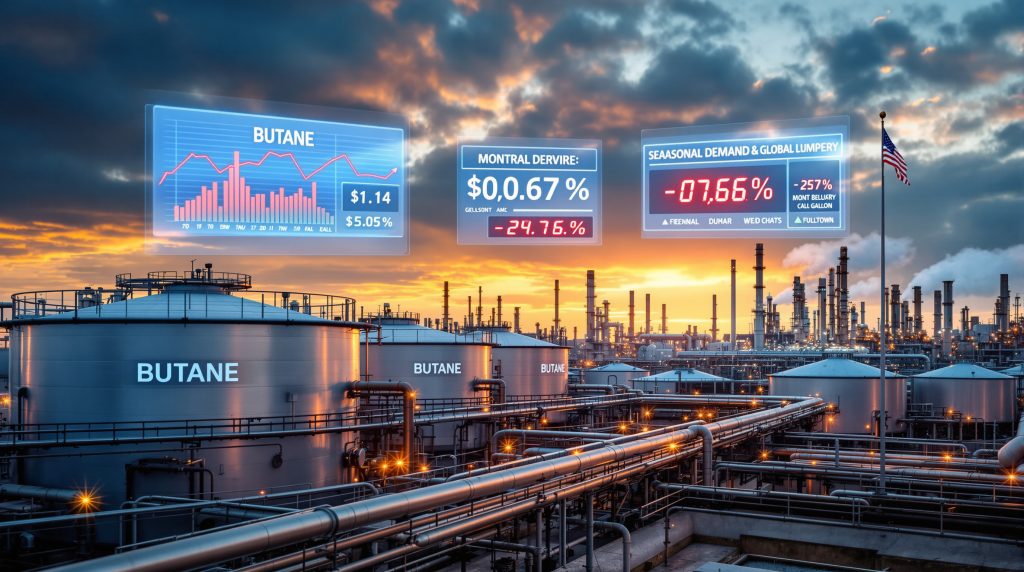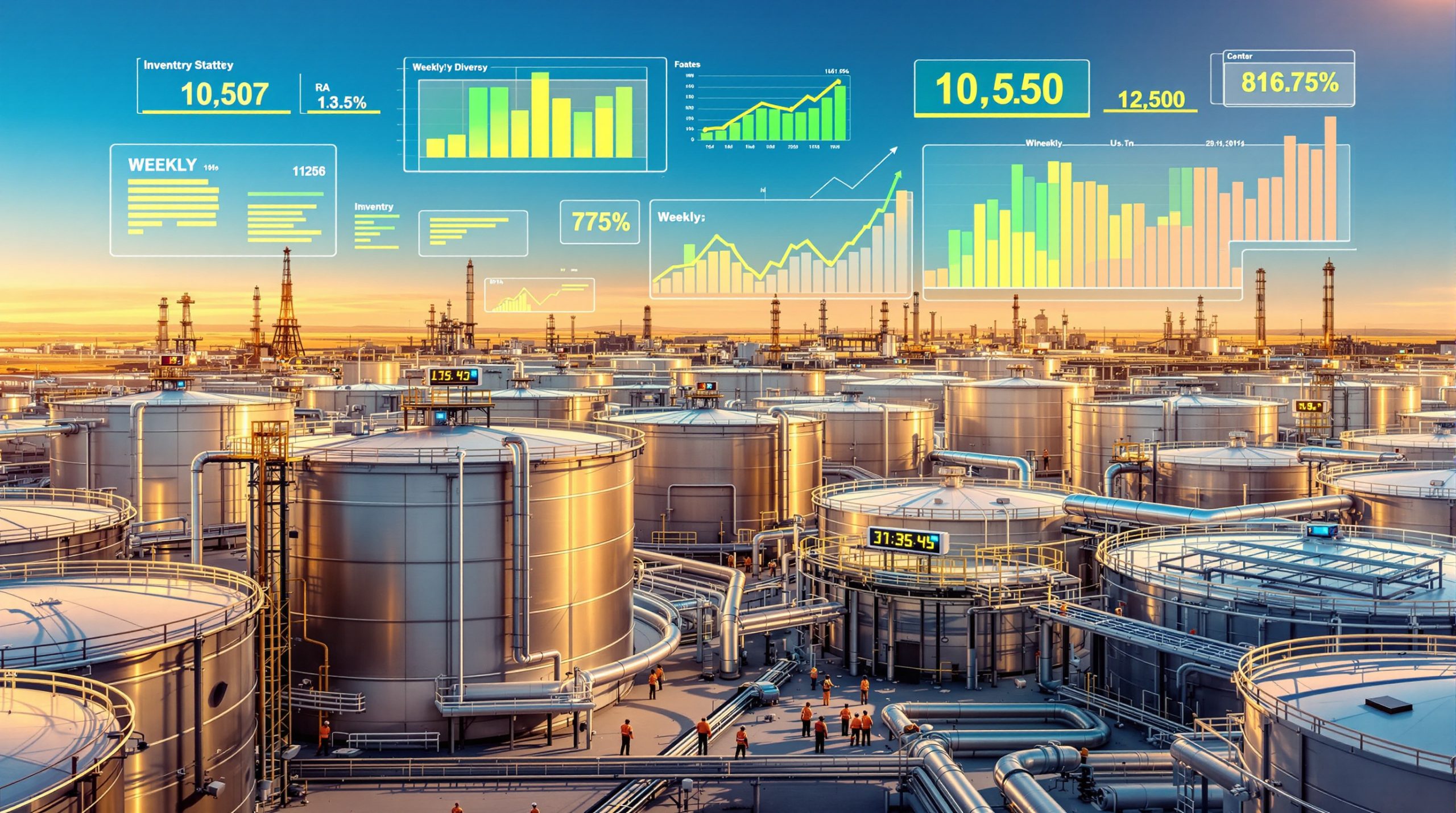Understanding Current Market Dynamics in America's Energy Hub
Mont Belvieu butane prices have faced sustained downward pressure throughout late 2025, with US mont belvieu butane prices remain weak creating significant challenges for traders and industry participants in America's primary natural gas liquids hub. The Texas-based pricing centre has experienced unprecedented weakness, with values struggling to recover despite traditional seasonal factors that typically support autumn price increases.
The current market environment reflects a complex interplay of supply-demand imbalances, international trade tensions, and shifting seasonal patterns that have disrupted normal pricing mechanisms. Industry participants report that fundamental market structures have shifted dramatically compared to historical norms, requiring new analytical frameworks to understand price movements.
Current Price Performance vs Historical Benchmarks
The magnitude of recent price declines at Mont Belvieu has caught many market observers off guard. Recent data shows EPC in-well butane averaging just 83.0 cents per gallon during the first 27 days of October 2025, representing a dramatic 27.6% decline from the 114.7 cents per gallon recorded during the same period in 2024.
| Period | 2024 Average (¢/USG) | 2025 Average (¢/USG) | Percentage Change |
|---|---|---|---|
| October 1-27 | 114.7 | 83.0 | -27.6% |
| September Average | 118.2 | 91.4 | -22.7% |
| August Average | 122.5 | 95.8 | -21.8% |
This sustained weakness has persisted despite expectations that autumn would bring the traditional seasonal recovery. The pricing deterioration has been particularly pronounced during mid-October periods, when refiners typically increase butane blending for winter gasoline formulations.
Furthermore, the relationship between butane and RBOB gasoline futures has also deteriorated significantly. Butane currently represents only 44.5% of RBOB gasoline futures value in October 2025, substantially below the historical average of 55.6% observed during comparable periods. This ratio breakdown indicates fundamental demand weakness beyond normal seasonal fluctuations.
Seasonal Demand Patterns Failing to Materialise
Traditional market dynamics typically see butane values strengthening from mid-September onward as refiners transition to winter-grade gasoline formulations. However, 2025 has defied these established patterns, with several factors contributing to the unusual weakness.
Key Seasonal Disruptions:
• Weather Outlook Impact: Forecasts for a milder-than-normal winter have significantly dampened expectations for traditional seasonal demand increases
• Refinery Blending Economics: The relative cost advantage of butane over alternative blending components has eroded
• Consumer Behaviour Changes: Shifts in driving patterns and fuel consumption have altered typical demand trajectories
• Supply Chain Adjustments: Inventory management strategies have adapted to uncertain demand conditions
The mild winter outlook has particularly impacted market sentiment, as refiners adjust their blending strategies based on temperature forecasts. Warmer conditions reduce the need for higher-volatility winter gasoline formulations, directly affecting butane demand in the crucial fourth quarter period.
Global Supply Chain Disruptions Impact Regional Pricing
International price transmission mechanisms have played a crucial role in the Mont Belvieu weakness. The interconnected nature of global LPG markets means that pricing decisions in major producing regions create immediate ripple effects across North American markets.
Critical Timeline of Events:
• September 30: Saudi Aramco announced unexpectedly lower contract prices, setting October butane at $475 per tonne, a $15 per tonne monthly decline
• October 1: Mont Belvieu physical prices fell immediately by 4.375 cents per gallon following the Saudi announcement
• October 14: Further deterioration pushed prices to six-month lows of 78.0625 cents per gallon
The Saudi Aramco contract price announcement had particular significance because it pushed delivered butane prices on the Far East Index lower, triggering a global readjustment of butane valuations. This demonstrates how pricing decisions in one region can rapidly transmit across global markets through arbitrage mechanisms, as highlighted in recent analysis.
Forward market signals have also reflected continued weakness, with November contracts trading at only modest premiums of 0.75 to 0.875 cents per gallon over October positions. This narrow contango structure suggests limited optimism among market participants for near-term demand recovery.
Geopolitical Tensions Affecting Energy Commodity Pricing
Trade tensions between the United States and China have introduced additional volatility into butane pricing mechanisms. In addition, the implementation of bilateral maritime fees has created both direct cost impacts and broader market sentiment effects that have weighed on prices, similar to broader US-China trade tensions affecting multiple commodity markets.
Policy Impact Analysis:
China announced retaliatory measures to impose fees on US-flagged and owned ships calling at Chinese ports, with both US and Chinese fees taking effect on October 14, 2025. This date coincided exactly with butane reaching its six-month low, highlighting the sensitivity of commodity markets to trade policy developments.
The timing of these trade measures has been particularly unfortunate for the butane market, occurring during a period when prices were already under pressure from fundamental supply-demand imbalances. Market participants report that uncertainty regarding trade resolution continues to weigh on sentiment and limit recovery potential.
"Market participants emphasise that sustainable price recovery requires resolution of underlying trade tensions and improved demand fundamentals, with meaningful bullish sentiment unlikely to emerge until broader economic and political uncertainties diminish."
Supply-Side Factors Influencing Current Weakness
Production capacity and inventory dynamics have contributed significantly to the persistent price weakness. The United States achieved record butane production levels in May 2025, leading to elevated inventory positions throughout the supply chain that continue to pressure prices. This reflects broader trends in US oil production decline patterns that have affected related hydrocarbon markets.
US Butane Supply Metrics (2025):
| Metric | Current Status | Year-over-Year Change |
|---|---|---|
| Peak Production Month | May 2025 (Record) | +12% vs May 2024 |
| Inventory Levels | Multi-year highs | +15-20% above average |
| Processing Capacity | 85-90% utilisation | Stable vs 2024 |
| Export Terminal Activity | Reduced loadings | -8% vs 2024 |
These elevated stock levels provide a buffer against demand fluctuations but also limit price recovery potential during periods of weak consumption. Natural gas processors and refiners have maintained high production rates despite weak pricing, contributing to oversupply conditions.
Infrastructure utilisation at Mont Belvieu remains robust, with storage facilities operating near capacity. However, the high inventory levels mean that any demand recovery would need to be substantial and sustained to meaningfully impact pricing dynamics.
Market Participants Driving Price Discovery
The Mont Belvieu butane market encompasses diverse participant categories, each contributing to price discovery through different mechanisms and time horizons.
Primary Market Participants:
• Producers: Natural gas processors operating gas plants throughout Texas and Louisiana
• Refiners: Integrated oil companies utilising butane for gasoline blending operations
• Financial Traders: Hedge funds and commodity trading advisors managing risk and seeking profit opportunities
• Physical Traders: Companies moving actual barrels between regions and storage facilities
• End Users: Petrochemical facilities consuming butane as feedstock for downstream production
Recent trading volumes have shown reduced speculative interest, contributing to price volatility and limiting recovery momentum. Open interest levels in butane-related derivatives have declined compared to historical norms, suggesting that financial participants have reduced their market exposure.
The reduction in speculative activity has important implications for price discovery, as financial participants often provide liquidity and help smooth out temporary supply-demand imbalances. Their reduced presence may contribute to more volatile price movements when fundamental conditions change.
Downstream Industries Influence on Butane Demand
The petrochemical industry represents a significant source of butane demand, utilising the commodity as both feedstock and fuel. Current industry operating rates and expansion plans directly impact regional consumption patterns and pricing dynamics.
Industrial Demand Drivers:
• Alkylation Units: Refineries using butane to produce high-octane gasoline blending components
• Steam Cracker Operations: Petrochemical plants utilising butane as ethylene production feedstock
• Fuel Gas Applications: Industrial facilities burning butane for process heating requirements
• Export Terminal Activities: Facilities preparing butane for overseas shipment
Gasoline blending economics have played a particularly important role in recent weakness. When butane prices remain elevated relative to alternatives, refiners may substitute other blending components, reducing overall butane demand and creating downward price pressure.
The relative economics between butane and other gasoline blending components, such as pentane and alkylate, continue to influence refinery purchasing decisions. Current price relationships favour alternative components in many applications, reducing butane consumption below normal levels.
Technical Indicators Signal Potential Price Direction
Technical analysis of Mont Belvieu butane pricing reveals key levels that market participants are monitoring for signals about future price movements. Consequently, these indicators provide insights into potential oil price stagnation patterns affecting broader energy markets.
Critical Technical Levels:
• Strong Support Zone: 75-78 cents per gallon range, representing 2025 lows
• Resistance Level: 90-95 cents per gallon zone, marking recent recovery attempts
• Breakout Threshold: Above 100 cents per gallon for sustained bullish momentum
• Key Moving Averages: 50-day and 200-day moving averages providing dynamic support/resistance
Momentum indicators suggest the current downtrend may be approaching oversold conditions, potentially setting up for a relief rally if fundamental conditions improve. However, the persistence of the downward trend indicates that any recovery will likely require significant catalyst events rather than purely technical factors.
Volume patterns have shown increased activity during price declines, suggesting that fundamental selling pressure rather than technical factors has been driving the weakness. This pattern typically indicates that sustainable recovery requires improvement in underlying supply-demand conditions.
Potential Market Recovery Scenarios
Despite current weakness, several factors could contribute to price stabilisation and recovery in the Mont Belvieu butane market.
Primary Recovery Catalysts:
-
Weather Pattern Shifts: Colder-than-expected winter conditions increasing heating and gasoline blending demand
-
Trade Policy Resolution: Reduced geopolitical uncertainty improving market sentiment and trade flows
-
Inventory Drawdowns: Seasonal consumption increases reducing elevated stock levels
-
Production Adjustments: Supply-side responses to sustained low prices reducing output
-
Export Market Development: New overseas demand outlets providing alternative destinations for US production
The likelihood and timing of these catalysts remain uncertain, with market participants taking a cautious approach to positioning for potential recovery. Furthermore, many industry observers suggest that multiple positive factors would need to align simultaneously to generate sustained price improvement.
Seasonal Recovery Timeline:
Market fundamentals typically support butane prices from December through February as winter weather patterns increase demand for higher-volatility gasoline blends. However, the mild winter forecast has reduced expectations for traditional seasonal support during this period.
Why Traditional Seasonal Patterns May Not Apply
For instance, the interconnection between global energy policies and regional pricing has become increasingly important. The OPEC production impact on global oil markets creates cascading effects on natural gas liquids pricing, including butane valuations at Mont Belvieu.
Long-Term Market Outlook and Industry Perspectives
Industry participants emphasise that sustainable price recovery requires resolution of underlying trade tensions combined with improved demand fundamentals. The current weakness reflects more than temporary market volatility, suggesting structural changes that may persist beyond the immediate term.
Strategic Considerations:
• Infrastructure Development: Continued expansion of storage and transportation capacity may help balance regional supply-demand disparities
• Market Diversification: Development of new end-use applications could provide additional demand outlets
• International Trade: Resolution of trade tensions could restore normal flow patterns and reduce price volatility
• Regulatory Environment: Potential policy changes affecting fuel specifications or environmental requirements
The butane market's integration with broader energy and petrochemical markets means that recovery will likely depend on improvements across multiple sectors rather than isolated developments in butane-specific applications.
"Industry observers suggest that meaningful bullish sentiment may not emerge until broader economic and political uncertainties diminish, emphasising the importance of macro-economic factors in commodity price determination."
Moreover, comprehensive insights into tariff impact insights suggest that trade policy developments will continue playing a crucial role in commodity market dynamics throughout 2025.
Key Factors for Market Participants to Monitor
Several critical factors will likely determine the trajectory of Mont Belvieu butane prices in coming months.
Priority Monitoring Areas:
• Weather Forecasts: Updates to winter temperature predictions affecting seasonal demand expectations
• Trade Negotiations: Progress on US-China trade talks and resolution of maritime fee disputes
• Inventory Reports: Weekly storage data indicating pace of stock drawdowns or builds
• Production Data: Natural gas processing rates and butane recovery statistics
• Refinery Operations: Utilisation rates and seasonal turnaround schedules affecting demand
• International Markets: Global LPG price movements and arbitrage opportunities
Market participants are advised to maintain flexibility in their positioning and risk management strategies given the uncertain fundamental outlook and elevated volatility levels that have characterised recent trading. Additional insights from commodity market analysis and technical trading resources provide valuable context for understanding current market dynamics.
The interconnected nature of global energy markets means that developments in seemingly unrelated regions or commodities can have rapid and significant impacts on Mont Belvieu pricing, requiring comprehensive monitoring of international market conditions.
Looking to Capitalise on Energy Market Volatility?
Discovery Alert's proprietary Discovery IQ model delivers real-time alerts on significant ASX mineral discoveries, helping investors identify actionable opportunities in commodities markets before broader market recognition. With energy and commodity sectors experiencing unprecedented volatility, securing immediate market insights through our 30-day free trial positions you ahead of traditional market participants.




